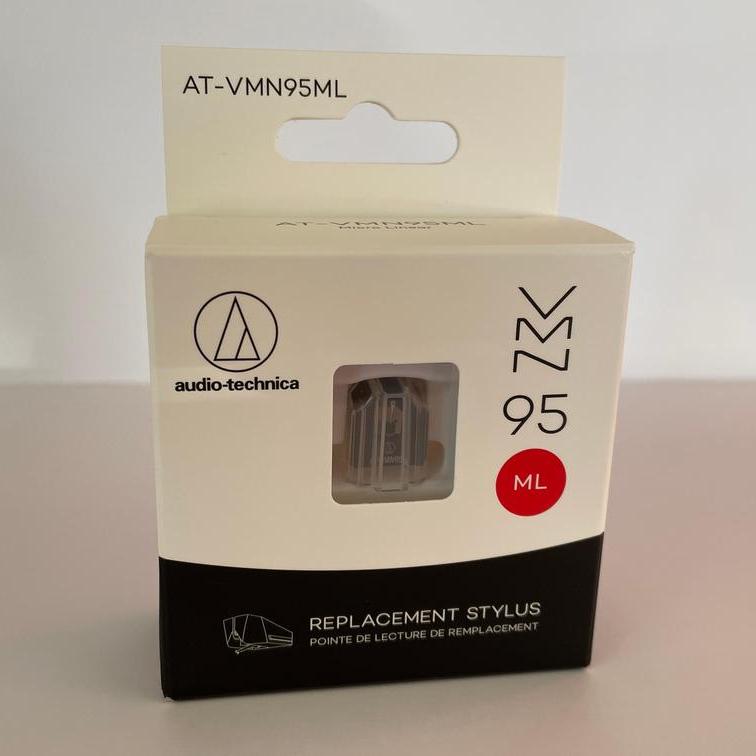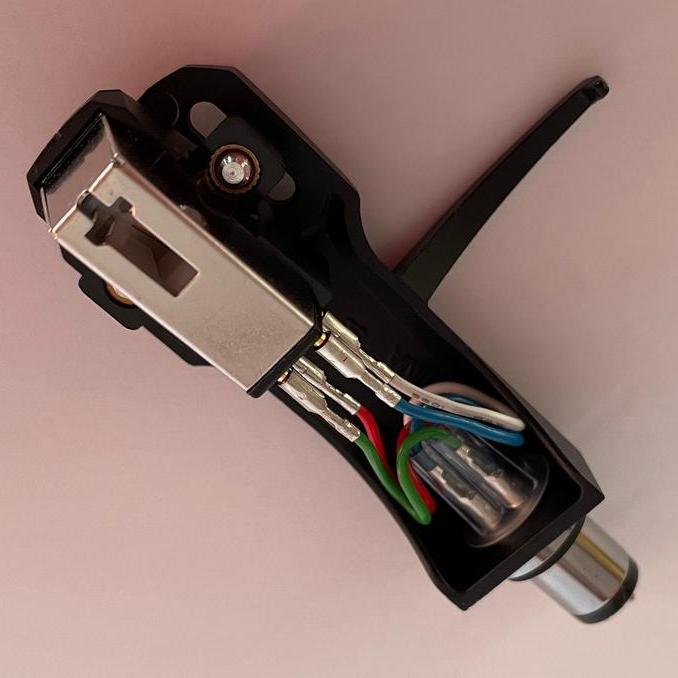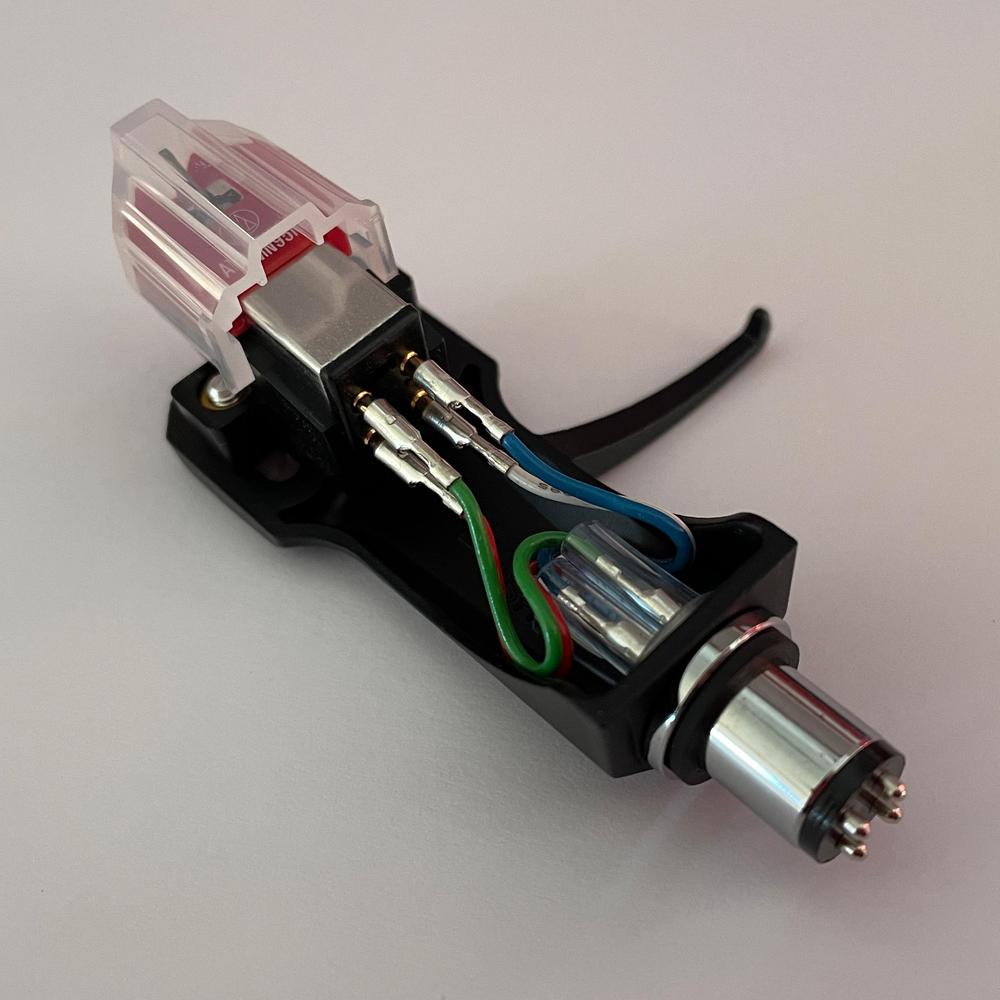Audio Technica AT-VM95ML Upgrade
The AT-VM95E which ships with the AT-LP5x turntable is a respectable elliptical offering and a great starting point for anyone getting into or back into vinyl records but the beauty of the VM95 cartridge is that the stylus is replaceable and all styli in the VM95 series are compatible. There is something for all budgets in the VM95 series from entry-level bonded conical designs up to nude Microlinear and Shibata variants. Here we are looking at the AT-VM95ML Microlinear stylus to see how it compares to the AT-VM95E which ships with the AT-LP5x turntable.
Overview
The AT-VM95ML is a Microlinear stylus with an aluminium cantilever and nude square shank which means the diamond isn’t bonded to a cheaper material as it is on the AT-VM95E. Audio Technica claim 1000 hours of play time for the Microlinear stylus compared to 300 hours for Elliptical variants which needs to be taken into account when considering the price difference. The AT-VM95ML has a slightly better frequency response than the AT-VM95E extending up to 25kHz and better channel separation (23dB vs 20dB) but it also has a marginally lower output voltage of 3.5mV compared to the 4.0mV of the AT-VM95E which needs to be considered during any comparisons.

Setup
Swapping out the stylus on the VM95 cartridge is very simple and made even easier if you have a removable headshell like the AT-HS6 which comes with the AT-LP5x turntable. The stylus is removed by sliding vertically away from the cartridge being careful not to touch the stylus or cantilever. It’s best to do this with the stylus protector on if you have it. Attaching the new stylus is as simple as aligning the tabs with the rectangular opening in the cartridge and sliding it on until it clicks into place. Screw the headshell back onto the tonearm, remove the stylus protector and you’re done!


Performance
Audio Technica claim “Microlinear profile diamond stylus offers high frequency response with less wear and distortion than elliptical or conventional linear contact styli” which more or less sums up my findings compared to the AT-VM95E. The first thing that struck me was the additional high frequency detail being extracted from the groove with the Microlinear stylus offering much improved clarity. Snare hits suddenly had additional texture and snap and certain vocals which caused horrible sibilance with the AT-VM95E tracked and presented perfectly. Even with this improved clarity the AT-VM95ML still favours a “warm” analogue presentation much like the AT-VM95E. It is clean rather than crisp or bright in how it delivers music.
For the low-mid frequencies I initially felt the Microlinear stylus was a little leaner sounding than the Elliptical but on further listening I realised this was mostly a product of mid-range distortion and bloating in the low frequencies which were again much cleaner with the Microlinear stylus. Outright bass extension appeared similar but bass definition was far superior with the AT-VM95ML. Less distortion and much improved definition are traits that extend all the way through the frequency range which leads to a more dynamic presentation. Instruments and other details in the mix have more room to breathe in the expanded soundstage compared to the AT-VM95E.
Bear in mind I did all of my testing using the built-in preamp of the AT-LP5x turntable which is more than capable of highlighting the benefits the Microlinear stylus upgrade can bring. I did some additional comparisons with my external DAC and headphones using sample recordings (see below) from the AT-LP5x USB output at it’s highest sample rate of 48kHz which confirmed what I was already hearing from my main system.
I tested some records which had very audible inner groove distortion with the AT-VM95E and there was a noticeable improvement with the Microlinear stylus which for the most part stayed composed and consistent all the way from the outer to the inner grooves of the record. Despite an improvement in overall tracking I didn’t notice much improvement in surface noise and other clicks and pops compared to the AT-VM95E but I guess mileage may vary from record to record in this regard.

Samples
Both of the records used for these samples are from the 80s so have had plenty of play time. The AT-VM95E stylus has had around 15 hours of use and the AT-VM95ML is new.
Sample 1:
AT-VM95E
AT-VM95ML
Listen out for the additional high frequency content giving a boost in clarity with the AT-VM95ML sample. Less obvious depending on your system/headphones will be enhanced bass definition and better instrument separation in general.
Sample 2:
AT-VM95E
AT-VM95ML
Listen out for the distorted and sibilant vocal on the AT-VM95E sample which is drastically improved in the AT-VM95ML sample.
Sample 2:
AT-VM95E
AT-VM95ML
Pay close attention to the low frequency detail on this one and in particular the bass guitar which has much better definition and additional texture with the AT-VM95ML. The overall soundstage is less “crushed” in the AT-VM95ML sample which gives a much cleaner presentation. Some may prefer the AT-VM95E sample which has more distortion and sounds more compressed but it will be highly dependent on personal taste, system and music genre.
Conclusion
Is the AT-VM95ML worth the upgrade? For me it’s a definite yes for several reasons. Firstly I think it represents good value for money if Audio Technica’s lifespan numbers are to be believed. The improved sonic and tracking performance combined with longevity of both the stylus and your record grooves makes this well worth the money over the AT-VM95E. That said the Elliptical offering which ships with the AT-LP5x is no slouch by any means. If everything I have spoken about above doesn’t resonate with your own experience listening to your record collection on your system then it might be that the AT-VM95ML won’t be worth the upgrade from a sound quality perspective. I would encourage you to take a listen to the samples provided and decide for yourself.